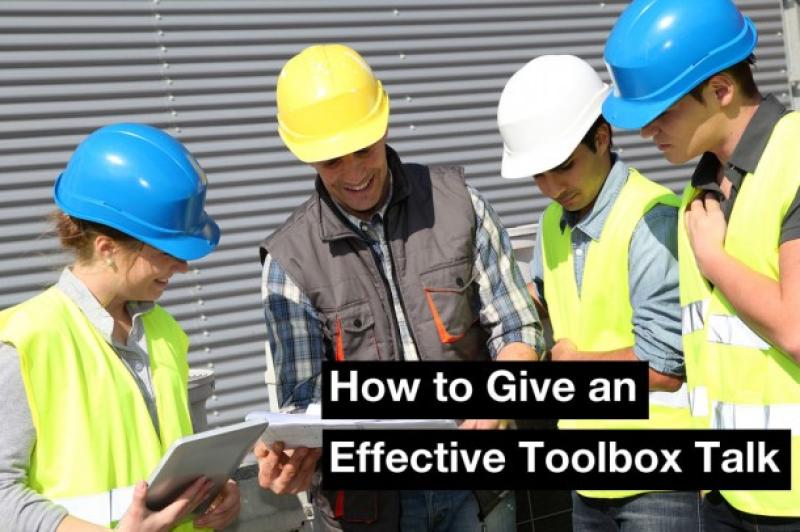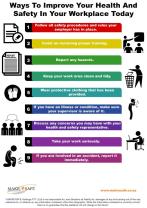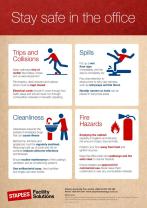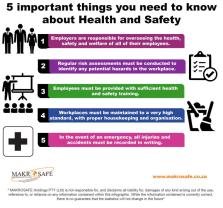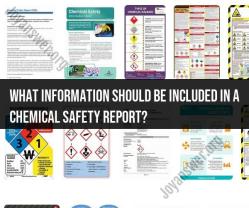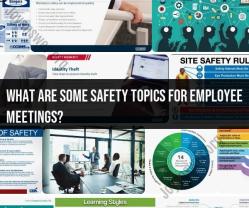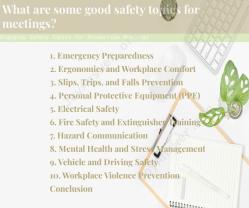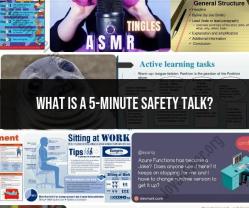How to give effective tool box talk?
Delivering an effective toolbox talk is essential for promoting a strong safety culture within a workplace. Here are key tips for giving an effective toolbox talk:
Know Your Audience:
- Understand the background, experience, and roles of the audience. Tailor your talk to address the specific needs and challenges of the participants.
Choose Relevant Topics:
- Select topics that are pertinent to the tasks and activities performed by the audience.
- Prioritize subjects that address current safety concerns, recent incidents, or emerging risks.
Be Clear and Concise:
- Keep your toolbox talk focused and concise. Aim for a duration of 5 to 15 minutes to maintain participants' attention.
- Clearly articulate key points and avoid unnecessary jargon.
Use Visual Aids:
- Incorporate visual aids such as diagrams, charts, or safety videos to enhance understanding.
- Visuals can help illustrate safety concepts and make the talk more engaging.
Relate to Real-Life Situations:
- Connect safety messages to real-life scenarios and experiences that the audience can relate to.
- Share examples of near misses, incidents, or successes to reinforce the importance of safety.
Encourage Participation:
- Foster a two-way communication flow by encouraging participants to ask questions and share their experiences.
- Engage the audience with open-ended questions to promote discussion.
Use Positive Reinforcement:
- Acknowledge and praise positive safety behaviors observed in the workplace.
- Positive reinforcement helps reinforce good practices and motivates employees to prioritize safety.
Highlight Practical Solutions:
- Provide practical solutions and actionable steps that participants can take to improve safety.
- Discuss specific measures that can be implemented immediately.
Create a Safe Environment:
- Establish a safe and non-judgmental environment where employees feel comfortable sharing their thoughts and experiences.
- Emphasize the importance of open communication about safety concerns.
Speak with Authority:
- Project confidence and speak with authority to command attention.
- Ensure that your voice is audible, and use varied tones to maintain interest.
Use Stories and Anecdotes:
- Share relevant stories or anecdotes that illustrate the consequences of unsafe practices or the benefits of adhering to safety guidelines.
- Storytelling can make the message memorable and relatable.
Provide Actionable Takeaways:
- Clearly outline specific actions that participants can take to improve safety.
- Empower employees by giving them the tools and knowledge to contribute to a safer work environment.
Repeat Key Messages:
- Emphasize key safety messages throughout the talk to reinforce important concepts.
- Repetition helps in retention and ensures that crucial points are not overlooked.
Follow Up and Follow Through:
- Follow up on previous toolbox talks to assess the implementation of safety measures discussed.
- Monitor progress and address any challenges or concerns raised by employees.
Evaluate Effectiveness:
- Seek feedback from participants to evaluate the effectiveness of the toolbox talk.
- Use feedback to continuously improve future safety discussions.
Document and Track:
- Keep records of toolbox talks, including topics covered, date, and attendees.
- Documentation is crucial for tracking safety initiatives and ensuring that all relevant topics are addressed over time.
By incorporating these key elements into your toolbox talks, you can deliver effective safety messages that resonate with employees, contribute to a safer workplace, and promote a culture of continuous improvement in safety practices.
Crafting Compelling Toolbox Talks for Workplace Safety:
1. Delivering Effectiveness:
- Focus & Relevance: Choose a current hazard, recent incident, or upcoming change directly relevant to the work tasks to make the talk relatable and timely.
- Conciseness & Clarity: Keep it brief (ideally under 15 minutes) and use clear, simple language understandable to everyone. Avoid technical jargon.
- Engagement & Interaction: Ask questions, encourage participation, and allow for discussion. Use relatable examples, visuals, and humor to keep people engaged.
- Active Listening & Openness: Create a safe space for employees to share concerns, suggestions, and questions. Actively listen and address their concerns.
- Actionable Takeaways: Conclude with a clear message summarizing key points, reiterating safe practices, and encouraging further conversation or reporting of safety issues.
2. Key Elements & Topics:
- Identify the Hazard: Clearly define the specific hazard or safety concern being addressed. Use real-world examples or incidents to highlight its potential consequences.
- Safe Practices & Procedures: Clearly explain the established safe work practices and procedures for dealing with the identified hazard. Demonstrate if possible.
- Personal Protective Equipment (PPE): Emphasize the importance of using and maintaining the appropriate PPE when encountering the hazard. Discuss selection, care, and replacement protocols.
- Reporting & Communication: Encourage employees to report any unsafe conditions, near misses, or concerns immediately to supervisors or safety personnel.
- Positive Reinforcement: Acknowledge and commend employees who consistently demonstrate safe work behaviors. This sets a positive example and reinforces the importance of safety.
3. Resources & Guidelines:
- OSHA Toolbox Talk Topics: The Occupational Safety and Health Administration (OSHA) provides a library of suggested toolbox talk topics covering various hazards and industries: https://www.osha.gov/
- National Safety Council: The National Safety Council offers resources and best practices for planning and delivering effective toolbox talks: https://www.nsc.org/nsc-membership/safety-talks-checklists-tip-sheets
- Industry-Specific Resources: Many industry associations and organizations provide toolbox talk materials and guidelines tailored to specific sectors and hazards.
- Interactive Tools & Technologies: Consider incorporating interactive tools like quizzes, videos, or simulations to enhance engagement and knowledge retention.
Remember: Effective toolbox talks are just one piece of the safety puzzle. Combine them with comprehensive training programs, hazard assessments, and ongoing communication to create a truly safe and healthy work environment.
